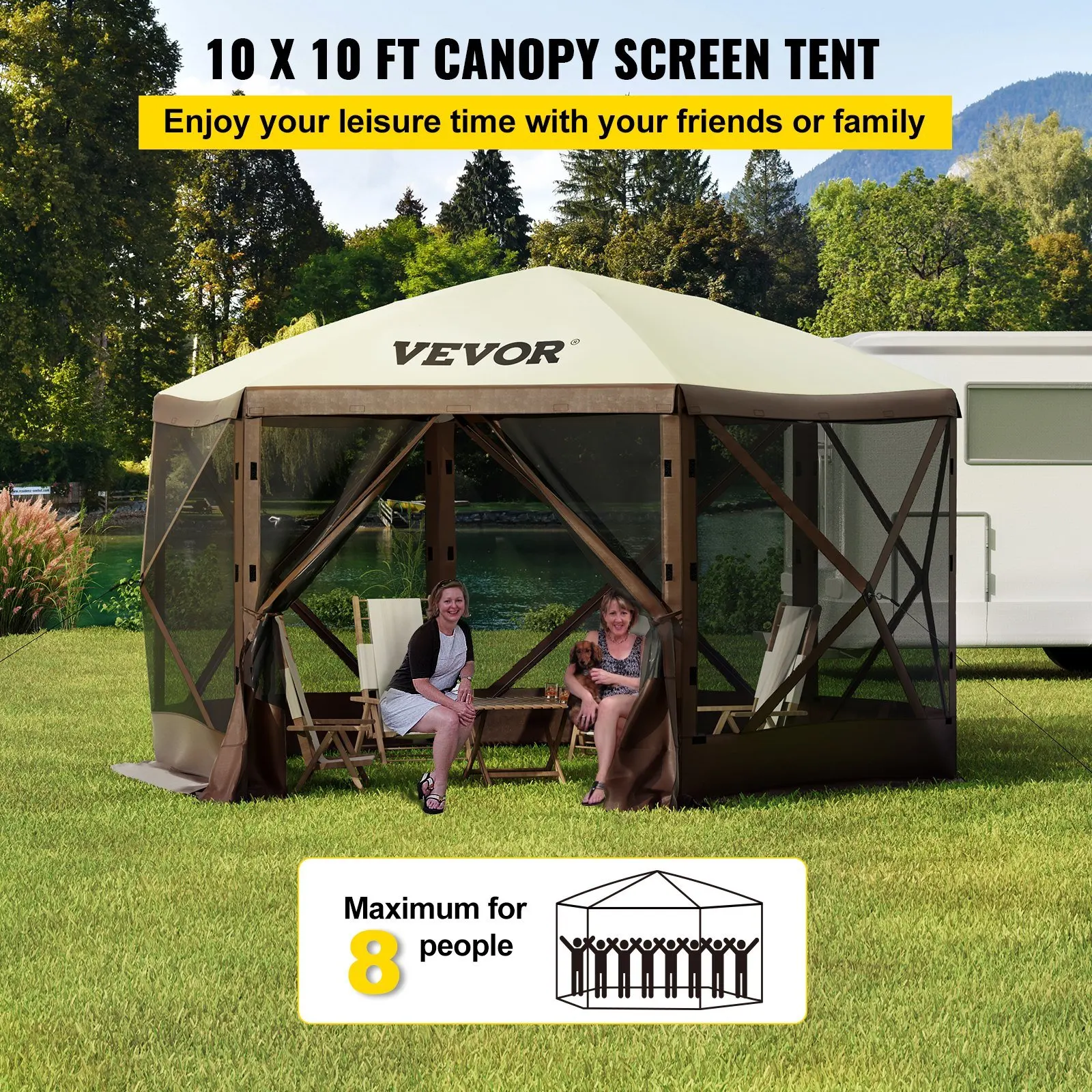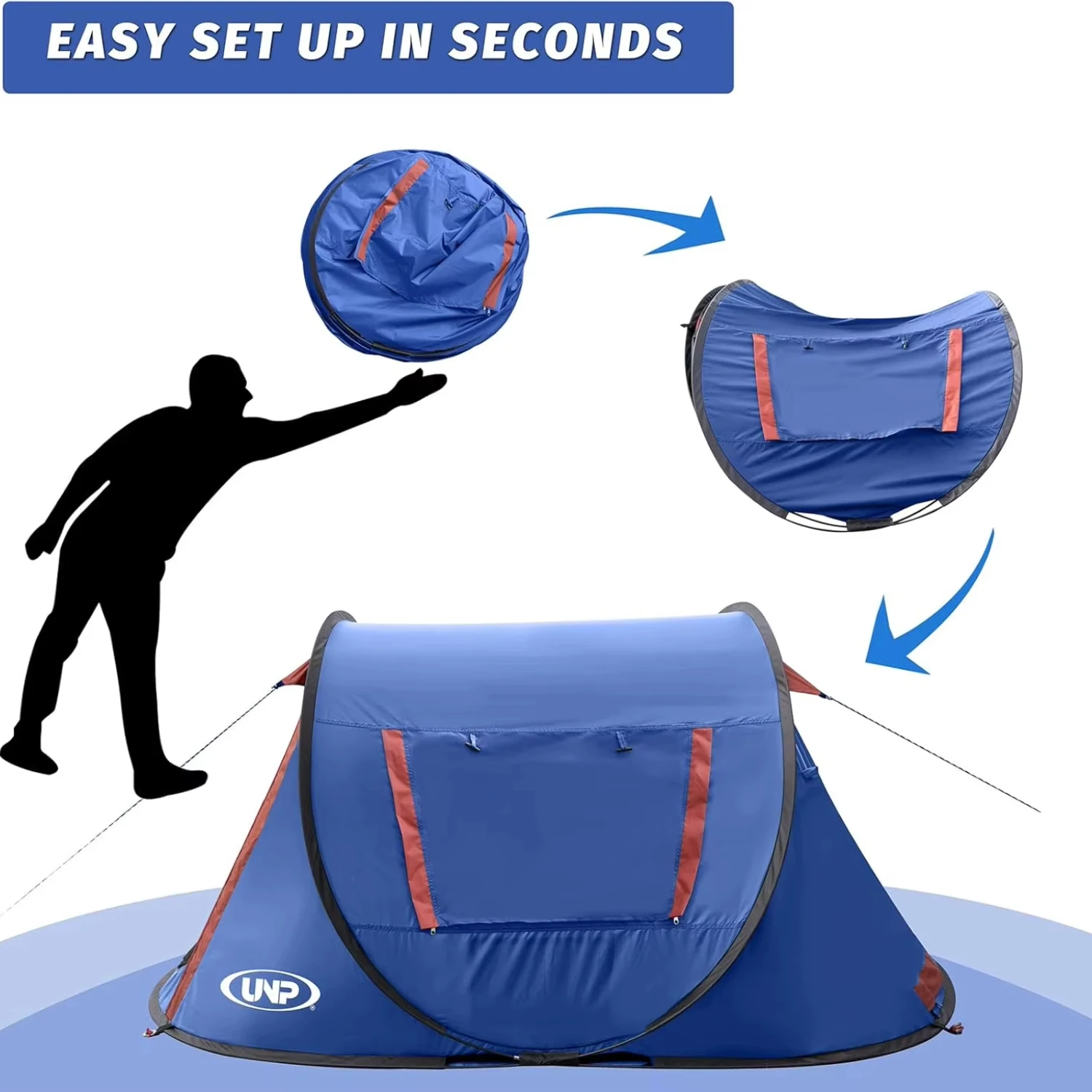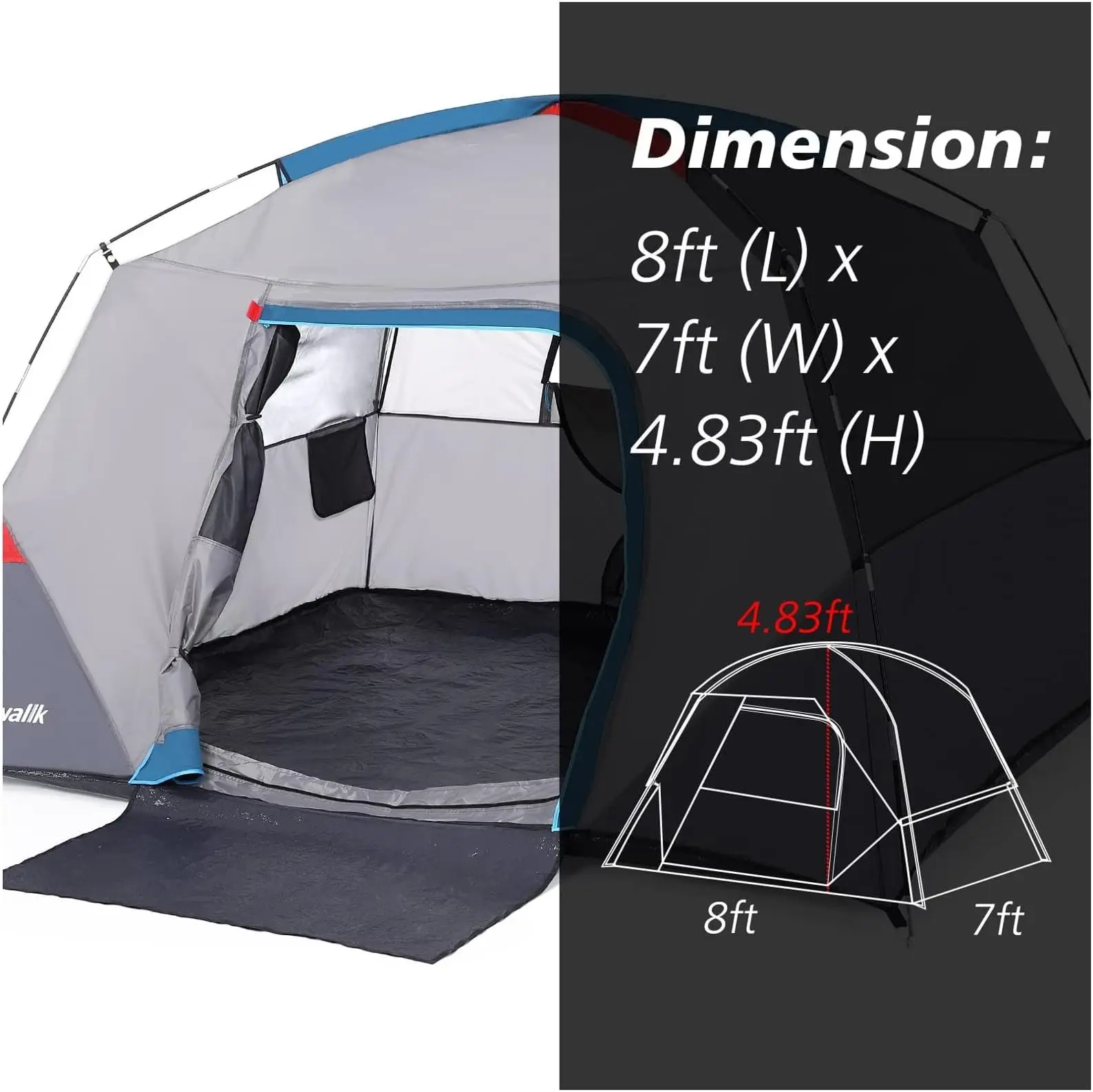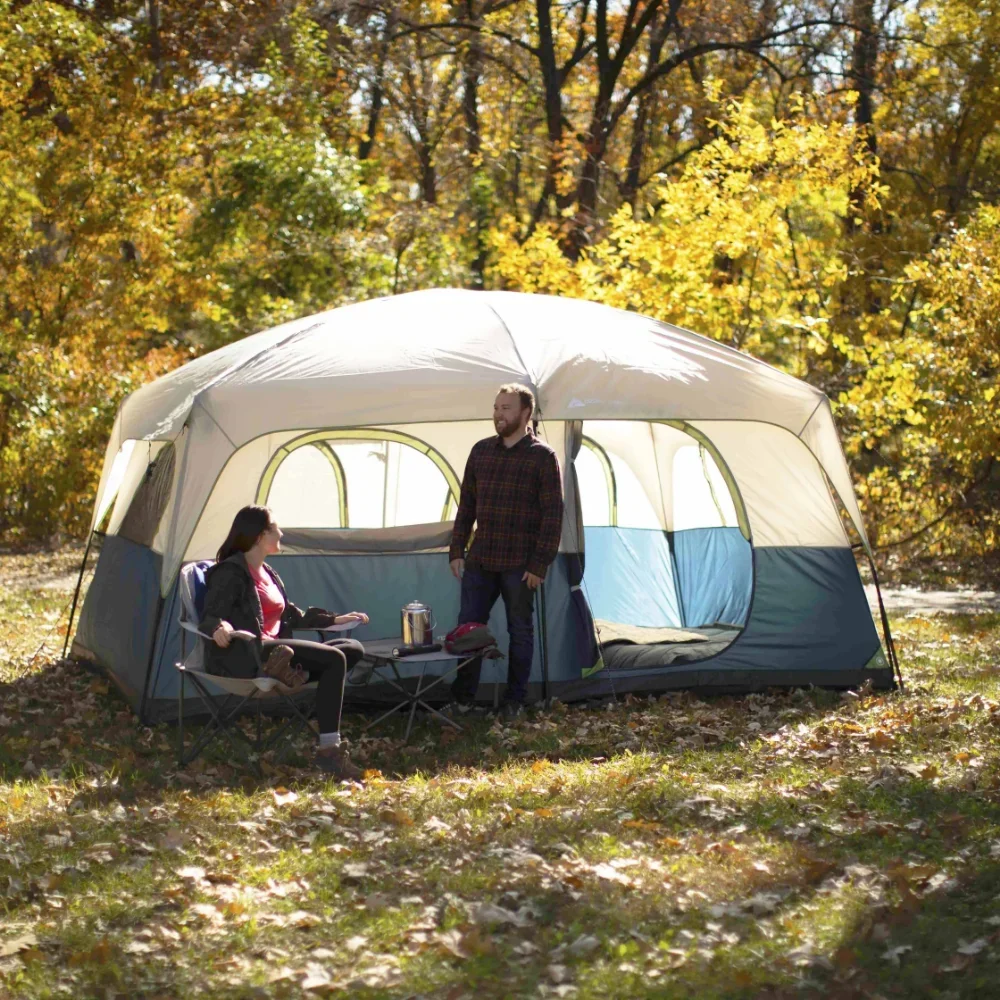What Makes Two-Room Tents Different: Privacy Beyond Extra Space
When venturing into the great outdoors, your tent becomes your temporary home. Two-room tents take this experience to another level by providing something increasingly precious in our connected world: privacy. Unlike traditional single-room tents, these innovative shelters incorporate internal dividers that create separate living spaces within a single structure.
The core benefit of two-room tents isn’t just the additional square footage—it’s the creation of a “private sanctuary” even when you’re miles from civilization. This private retreat within nature allows campers to enjoy solitude when desired while still maintaining the communal camping experience.
Understanding different shelter options for two campers can dramatically improve your outdoor experience, but the privacy features of two-room camping tents offer unique advantages for various groups:
- Families with children of different ages and sleep schedules
- Couples camping together who desire separate sleeping areas
- Mixed groups of friends seeking personal space
- Anyone who values having a dedicated changing area or quiet space
Most two-room tents feature either side-by-side configurations (rooms next to each other) or front-back designs (one room behind the other). According to camping surveys, nearly 70% of tent campers report privacy concerns as a significant challenge during multi-person trips—precisely the problem these divided shelters address.
Essential Privacy Features in Two-Room Tent Design
The thoughtful design features of two-room tents directly address the privacy needs that traditional single-room shelters simply cannot accommodate. These purpose-built elements work together to create genuine separation without sacrificing the practical benefits of sharing a single shelter.
Room Divider Options
Internal room dividers serve as the primary privacy mechanism, with several types offering different levels of separation:
- Zippered dividers: These provide the most complete privacy by creating a sealed barrier when fully closed
- Toggle-up dividers: Offering flexibility, these can be partially or fully secured as needed
- Sewn-in dividers: Permanent barriers that provide consistent separation
- Removable dividers: Maximum versatility allowing for complete removal when privacy isn’t needed
The material composition of dividers significantly impacts privacy levels. Solid fabric panels offer superior visual privacy compared to mesh dividers, which prioritize airflow but reduce sound and visual privacy. The best designs feature floor-to-ceiling coverage to maximize the sense of separate rooms.
Multiple Entrance Design
The configuration of tent doors plays a crucial role in privacy enhancement:
- Independent entrances allow occupants to come and go without disturbing others
- Strategic door placement on opposite sides or ends maximizes the feeling of separate spaces
- Vestibule additions outside each door provide transition zones for gear storage or shoe removal
Visual Privacy Elements
Beyond basic dividers, thoughtful visual privacy features include:
- Strategic window placement to prevent direct line-of-sight between rooms
- Interior curtains or panels for windows and mesh sections
- Blackout fabrics in sleeping areas that prevent shadows and silhouettes
- Interior pockets and storage solutions that keep personal items organized and private
The overall tent structure also influences privacy capabilities. Cabin-style tents with vertical walls typically offer better room separation than dome tents, where sloping walls can compromise the effectiveness of room dividers.
The practical applications of two-room tents for group camping demonstrate these features in action, while different design options for dual-room tents can be tailored to specific privacy needs.
Privacy Benefits for Families with Children
For families, the privacy advantages of two-room tents address numerous camping challenges that can otherwise lead to frustration and sleep deprivation.
The ability to create separate sleeping quarters for adults and children solves one of camping’s most common dilemmas: differing sleep schedules. Parents no longer need to whisper in the dark or remain motionless while children fall asleep. Instead, they can enjoy conversation, read with headlamps, or plan the next day’s activities in their own space.
This separation proves especially valuable for:
- Parents with young children who need naps during the day
- Families with teenagers who prefer staying up later
- Parents who want to rise early without disturbing sleeping children
- Creating a quiet space for infants away from campsite noise
The privacy divider also establishes a psychological boundary that helps children understand when it’s quiet time versus play time. Many families report that this simple division significantly improves bedtime routines while camping.
For nursing mothers or parents with infants, the private room provides a comfortable, sheltered space for feeding and changing without leaving the tent or feeling exposed. This practical benefit allows for more relaxed parenting in the outdoors.
The wide range of key advantages in two-room family tents extends beyond privacy to include better organization, improved sleeping conditions, and more enjoyable family camping trips.
Enhanced Privacy for Groups of Friends and Mixed Camping Parties
When friends gather for camping adventures, personal space can quickly become a premium commodity. Two-room tents provide an elegant solution to the social challenges that often arise in group camping scenarios.
The separate rooms create natural boundaries that respect individual preferences while maintaining the camaraderie of a shared camping experience. This arrangement proves particularly valuable for:
- Mixed-gender groups seeking appropriate changing and sleeping spaces
- Friends with different sleep schedules or habits (early risers vs. night owls)
- Individuals who require quiet time to recharge during social outings
- Accommodating snorers without banishing them to a separate tent entirely

The typical configurations for friend groups might include equal-sized rooms (2+2 or 3+3 arrangements) or asymmetrical divisions based on specific needs. The flexibility to adjust privacy levels—opening dividers for social time and closing them for sleep—creates a dynamic living space that adapts to the group’s changing needs.
Compared to bringing multiple single tents, a two-room tent maintains the community feel of camping together while reducing the overall footprint at the campsite. This consolidated approach often means securing better camping locations while simplifying setup and breakdown.
For comprehensive information about different configurations, the ultimate guide to two-compartment tents provides detailed insights into maximizing the social benefits while preserving personal space.
Personal Comfort: Changing, Sleeping, and Private Time
Among the most immediate privacy benefits of two-room tents is the elimination of the awkward “where do I change?” dilemma. The separate room provides a dedicated changing area, allowing campers to change clothing comfortably without resorting to contortionist maneuvers in sleeping bags or trips to distant restroom facilities.
Beyond the practical aspects of changing clothes, the divided space creates opportunities for personal comfort that enhance the overall camping experience:
- A quiet reading nook away from conversation and activity
- Private space for meditation or personal reflection in nature
- Separate sleep environments for those with different temperature preferences
- Individual areas for organizing personal gear without impacting shared spaces
The psychological benefit of having a designated “personal space” while camping shouldn’t be underestimated. Even devoted outdoor enthusiasts occasionally need brief moments of solitude, and a two-room tent provides this without requiring physical separation from the group.
Light management between rooms becomes particularly valuable when campers have different sleep schedules. Early risers can prepare for morning activities while others continue sleeping, protected by the room divider and strategic use of lighting.
For additional protected space outside the sleeping area, understanding how a camping tent vestibule complements the two-room design can further enhance privacy and comfort during extended stays.
Privacy-Enhancing Blackout Technology and Light Management
Advanced two-room tents often incorporate specialized “Dark Zone” or blackout bedroom technology that dramatically enhances privacy while improving sleep quality. This innovative feature addresses multiple aspects of the camping experience:
- Reduces early morning light penetration, allowing for later wake times regardless of sunrise
- Prevents silhouettes from being visible from outside the tent, enhancing changing privacy
- Creates a genuinely dark sleeping environment even in bright campgrounds or during full moons
- Helps regulate temperature by blocking direct sunlight and reducing heat buildup
The technical specifications of blackout fabrics typically show light reduction of 90-99% compared to standard tent materials, which transform the interior experience dramatically. This darkness not only improves sleep quality but also enhances the feeling of having a truly private space.
The integration of these blackout features with ventilation systems requires careful design consideration. Premium two-room tents incorporate mesh panels and adjustable vents positioned to maintain airflow while preserving visual privacy, solving the traditional compromise between ventilation and seclusion.
For those who value both spaciousness and privacy, learning how to transform your living space with this ultimate game changer provides complementary strategies to maximize your tent’s interior functionality.
How to Choose a Two-Room Tent for Maximum Privacy
When selecting a two-room tent with privacy as a priority, several key features deserve particular attention:
Divider Quality Assessment
- Look for full height, floor-to-ceiling dividers rather than partial barriers
- Choose opaque, dark-colored dividers over light or translucent materials
- Zippered dividers provide more complete privacy than tie-back or toggle options
- Check whether dividers are sewn-in (permanent) or removable based on your preference
Entrance Configuration
- Multiple doors (ideally one per room) significantly enhance privacy
- Doors positioned on opposite sides or ends maximize separation feeling
- Look for quiet, smooth-operating zippers to minimize disturbances
- Consider vestibule size for each entrance as additional private transition zones
Room Proportions and Layout
- Evaluate whether room sizes match your specific needs (equal or primary/secondary)
- Consider floor plan shapes that naturally create privacy (L-shaped designs vs. rectangular)
- Check interior height in both rooms—some designs sacrifice headroom in secondary spaces
- Review interior organization features that keep personal items separate

Sound management requires attention to overall material quality. Thicker fabrics generally provide better sound dampening than ultralight materials. Similarly, the ground sheet construction (single vs. separate for each room) affects sound transmission between spaces.
The balance between ventilation and privacy presents an important consideration. Look for designs that position mesh panels strategically to allow airflow without compromising visual privacy. Some models feature adjustable vents that can be opened or closed based on conditions and privacy needs.
Understanding how to select the ultimate compact shelter for two establishes foundational knowledge, while exploring different two-room tent layouts and sizes helps match specific designs to your privacy requirements.
Privacy Limitations: What Two-Room Tents Can’t Solve
While two-room tents significantly enhance camping privacy, realistic expectations about their limitations help prevent disappointment:
- Sound transmission reality: Fabric dividers provide visual privacy but offer limited sound dampening. Normal conversation easily carries between rooms, so noise-sensitive sleepers should consider additional solutions like white noise machines or earplugs.
- Shared atmosphere: Odors, temperature, and humidity remain relatively consistent throughout the tent despite room divisions. Cooking aromas or perspiration odors don’t respect fabric boundaries.
- Weight and bulk tradeoffs: The additional materials required for privacy features add weight and packed size—considerations for backpackers or those with limited vehicle space.
- Setup complexity: Two-room tents typically involve more poles, clips, and adjustment points than simpler designs, potentially increasing setup time and complexity.
- Campsite constraints: Larger footprints may limit suitable campsite options, especially in established campgrounds with defined tent pads.
These limitations don’t negate the privacy benefits but suggest complementary solutions or considerations when planning your camping setup. Understanding whether a 2-person tent is actually big enough helps establish realistic space expectations for any tent configuration.
Creative Solutions to Enhance Two-Room Tent Privacy
Beyond the built-in features of two-room tents, several creative approaches can further elevate privacy levels:
Strategic site selection: Position your tent where natural barriers like bushes, rocks, or trees provide additional privacy screening between tent sections and neighboring campsites.
Privacy accessories: Hang organizational pockets or gear hammocks from ceiling loops to create additional visual barriers without compromising tent integrity.
Optimal orientation: Position the tent with doors facing away from neighboring campsites and dividers aligned to block sight lines from high-traffic areas.
Establish clear “room rules”: Set simple guidelines with camping companions about knocking before entering, quiet hours for each section, or designated changing times.
Sound management: Use soft materials like clothing bags or pillows along the bottom of dividers to reduce sound transfer between rooms.
Lighting discipline: Employ individual headlamps rather than lanterns to contain light within each room, and use red light modes at night to preserve night vision while minimizing light bleed.
These enhancements work particularly well when combined with proper two-person lightweight tent setup techniques that optimize interior space utilization and privacy boundaries.
Are Two-Room Tents Worth the Extra Investment for Privacy?
When considering the higher price point of two-room tents compared to single-room alternatives, the privacy benefits must be weighed against the additional investment:
For whom the investment clearly pays off:
– Families with children spanning different age groups
– Regular campers who spend multiple weekends per season outdoors
– Those who frequently camp with mixed groups or friends
– Campers who value extended stays at a single location
When simpler alternatives might suffice:
– Solo campers or dedicated couples who rarely host others
– Ultralight backpackers prioritizing weight reduction
– Occasional campers (1-2 times yearly) with basic needs
– Those camping primarily in warm weather where outdoor living space is readily available
The price premium for two-room models typically ranges from 30-60% above comparable single-room tents. However, this investment potentially replaces the need to purchase multiple smaller tents, making it economically sensible for regular group campers.
For those concerned about setup complexity alongside privacy benefits, many easy-setup camping tent designs now incorporate two-room configurations, eliminating the traditional tradeoff between convenience and privacy.

Conclusion: Transforming Your Outdoor Experience Through Privacy
Two-room tents offer a remarkable solution to one of camping’s perennial challenges: finding privacy in shared outdoor living spaces. By creating distinct areas within a single shelter, these innovative designs transform the camping experience from merely tolerable to genuinely comfortable for multiple-person groups.
The privacy benefits extend across various camping scenarios—from families with children to friend groups to couples seeking separated spaces. The ability to change clothes comfortably, sleep undisturbed, and enjoy moments of solitude significantly enhances the overall camping experience.
When selecting a privacy-focused two-room tent, prioritize divider quality, door configuration, and room proportions that match your specific needs. Remember that the best design balances privacy features with practical considerations like weight, setup complexity, and ventilation.
At Explore Elements, we believe that outdoor adventures should be comfortable as well as exciting. Two-room tents exemplify this philosophy by creating private sanctuaries within nature, allowing campers to enjoy both community and solitude during their time outdoors. For those who value standing room along with privacy features, our selection of tall stand-up camping tents offers additional comfort options to enhance your camping experience.

